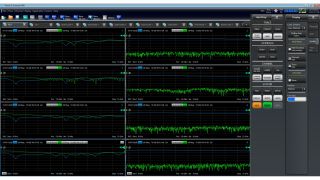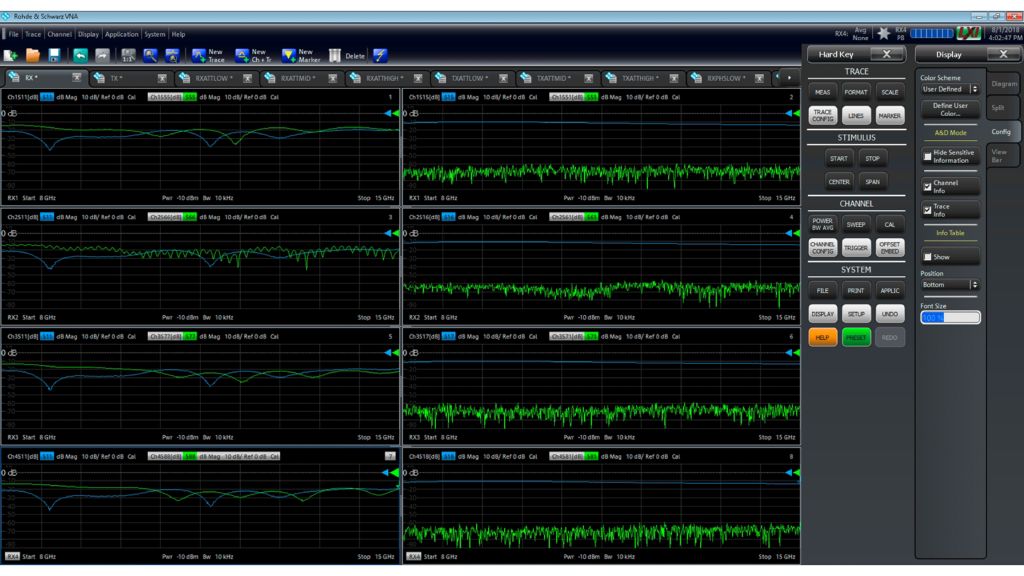Verify beamformer ICs for phased array antennas
Integrated beamformer ICs shrink the size of antenna feed electronics. Multiport network analyzers shrink the necessary test setup down to one instrument.

Integrated beamformer ICs shrink the size of antenna feed electronics. Multiport network analyzers shrink the necessary test setup down to one instrument.
Beamforming using phased array antennas is a common technology for radar and electronic warfare in the aerospace and defense industry. In satellite communications and 5G NR, phased array beamforming is becoming a default concept.
As carrier frequencies go up, antenna element dimensions shrink, leaving less room for the feed circuitry and putting on the pressure to reduce size. In order to narrow the beamwidth, the number of antenna elements in the phased array system is increasing. Cost and size per element feed are getting more attention.
Integrated RF beamforming ICs include phase and gain adjustment per path as well as amplification capabilities for the TX and RX channels.
Such beamformer ICs support four or more antenna elements from one input signal. Full characterization and calibration requires simultaneous assessment of all ports.
A true multiport vector network analyzer (VNA) is the ideal tool to fulfill this requirement. Parallel connection to all of the beamformer IC’s RF ports allows fast and direct evaluation of all individual channels and the relative behavior in the beamformer IC. Simultaneous measurements on up to 24 ports makes it possible characterize a beamforming IC in full detail and see the cross-correlation effects while monitoring all antenna connections.


All ports of the beamforming IC at a glance using the R&S®ZNBT multiport VNA
For beamforming applications, the phase of each path needs to be precisely controlled. High-resolution phase shifters integrated in the DUT allow a resolution down to a few degrees for accurate beamsteering. The level adjustment per path makes it possible to push down the side lobes of the created beam. A high-performance VNA enables exceedingly accurate absolute and relative phase and level measurements. Checking the impedance matching of the beamformer IC towards the antenna is a standard task for a VNA.
Typically, the TX and RX paths are tested separately. Both include phase and level adjustment for beamsteering. The RX path includes a low noise amplifier (LNA), the TX path an output RF power amplifier that may work as a final stage or as a driver for additional external power amplifiers. Initial tests to define the linear range, compression point and intermodulation using two tones are ideally performed using a common test platform.
The VNA allows characterization of each function block inside the beamformer IC – from switches to amplifiers. Linearity and stability of the phase and level are important to ensure stable and reliable beamforming. To compensate for e.g. temperature effects, the DUT is characterized over varying conditions to create calibration data used in the final application as look-up tables.
To ensure a good user experience, the signal quality must meet the requirements in line with the standard. The integrated amplifiers must meet EVM and ACLR requirements to enable data transmission with a low bit error rate.
Rohde & Schwarz offers a powerful, wideband test solution covering millimeterwave bands (including the 5G bands) to characterize the integrated amplifiers.

